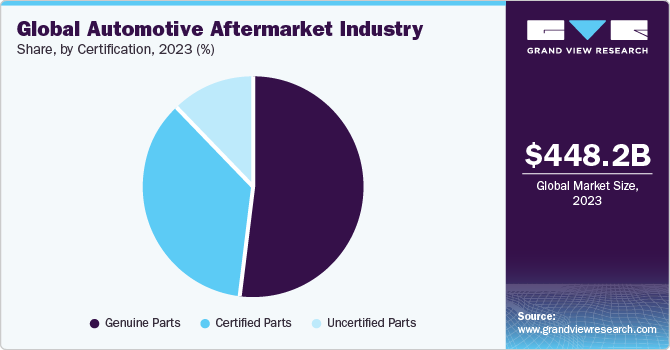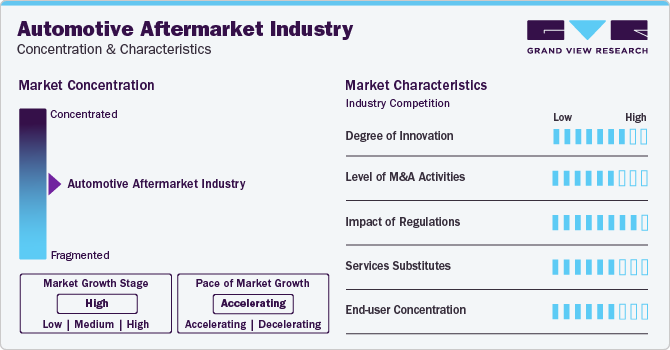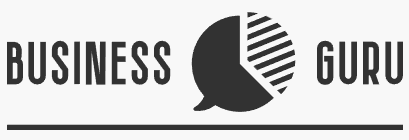Opening an auto parts store can be a lucrative business opportunity. The automotive aftermarket industry is projected to be valued at $1,119.2 billion by 2032. This growth provides ample room for new auto parts stores to capture market share.

Launching a successful auto parts business requires careful planning and preparation. You need to research your local market, choose a profitable niche, obtain necessary licenses and permits, source quality inventory at wholesale prices, and implement effective marketing.
This comprehensive guide covers how to start an auto parts store. Topics include registering an EIN, obtaining business insurance, forming a legal business entity, and more.
1. Conduct Auto Parts Store Market Research
Market research is essential to starting your own online auto parts business. It offers insight into your business model, target market, trends in the auto parts industry, and other details integral to forming a thorough auto parts retailer business plan.

Some details you’ll learn through market research about how to sell auto parts include:
- Factors like population size, median income, and number of vehicle owners shape the addressable market.
- Los Angeles County has over 6 million registered vehicles, presenting a larger opportunity than rural Montana.
- Selling parts to car restoration businesses can be highly profitable, provided you can source the parts which can sometimes be difficult to find.
- Resources like the U.S. Census and local transportation departments provide useful region-specific statistics.
- Some auto parts stores cater to everyday driver maintenance needs like oil changes and batteries, while others may offer car detailing services and industry-specific parts that are, for example, used in go-karts.
- Analyze the existing niche competitor landscape in your area to spot potential gaps.
- There are over 120 million households in the U.S. with at least one vehicle.
- During COVID-19, a trend towards road trips over air travel has emerged, suggesting strong continued parts usage ahead.
- Auto parts stores make money from both do-it-yourself individual customers and professional mechanic shops.
- Profit margins can range from 15-50% depending on inventory purchased at wholesale.
- Many stores also provide ancillary services like oil changes and diagnostic tests for added income.
With close to $100 billion spent in repair shops annually, a well-run auto parts store in the right location can deliver over $1 million in annual sales. Conducting in-depth market research prepares you to make smart business decisions in the auto parts market.
2. Analyze the Competition
Carefully evaluating your competition is imperative when launching an auto parts store. This industry has heavyweights like AutoZone and O’Reilly controlling significant market share, plus online retailers like Amazon capturing growing e-commerce spending.

Begin by identifying brick-and-mortar stores in your geographic area. Drive around town and neighboring cities mapping existing auto parts stores. Take notes on locations, branding, store sizes, inventory offerings, and pricing.
Talk to store managers to gauge their customer service strategies and the most popular products. This competitive analysis should shape decisions like your store layout and product selection.
Research the major chains online too. Visit their websites examining available parts, delivery options, warranties, and discount programs. Subscribe to email lists highlighting promotions that your independent store could match or beat. Large retailers spend millions on digital marketing.
Don’t ignore online pureplay competitors either. Over 50% of auto part buyers now research purchases online before buying in-store. Your website, SEO, and parts look-up tool needs to engage digital-first customers.
By thoroughly analyzing regional brick-and-mortar retailers and growing e-tailers, new auto parts store owners can forge savvy competitive differentiation strategies. This ensures your inventory, store format, and omnichannel approach deliver an unmatched customer value proposition within your local market.
3. Costs to Start an Auto Parts Store Business
Starting an auto parts store requires significant upfront capital investment before opening doors to customers. Common start-up costs include expenses related to store layout and design. There are also ongoing costs to consider.
Let’s take a closer look at some of the common expenses you’ll encounter as you learn how to start an auto parts store.
Startup Costs
You should expect to spend anywhere between $25,000 to $75,000 outfitting your retail space properly depending on the overall size. Critical purchases will be:
- Commercial shelving units
- Front counter point-of-sale stations
- Office furniture, lighting fixtures
- Exterior and interior signage
If your leased storefront requires major build-outs or renovations to become functional, hiring licensed contractors adds substantial extra costs during this initial set-up phase.
Another sizeable start-up investment will be acquiring an adequate auto parts inventory to meet customer demand when launching operations. Plan to allocate $100,000 to $500,000 to stock enough inventory across your chosen performance, maintenance, and replacement categories, including tires, wheels, seats, even window tints.
As far as tints are concerned, you may need to check if you’re allowed to sell them due to laws that regulate how much a window can be tinted, if at all.
Since comprehensively carrying all possible SKUs and part types is impossible early on, focus your initial inventory buys on faster-selling items your target market will likely purchase most frequently for common jobs and repairs.
Outfitting your store with the right IT systems and equipment is another consideration when tallying start-up budgets. A good point-of-sale system that seamlessly handles customer checkout will run between $2,000 to $5,000 for the hardware terminals and first-year software licensing.
Promoting and marketing a new store generally carries a price tag of around $15,000 depending on the exact scope and duration desired.
In total, individuals looking to open even a small independent auto parts store need to plan on securing $250,000 to $750,000. Obtain these funds through business loans, personal asset capitalization, and other funding sources to responsibly cover the myriad of start-up hurdles.
Ongoing Costs
In most areas of the country, prevailing triple net base rental rates for viable small retail storefront space range between $20 to 40 dollars per square foot when utility expenses are factored in.
With utilities included, a hypothetical 3,000-square-foot location would conservatively land right around $8,000 per month on average for occupancy costs alone. Location desirability, market competition, and property taxes greatly sway base leases up or down as well.
Industry research indicates dedicating at least $5,000 every month toward ongoing restocking and targeted expansion.
After including base wage plus commissions for store managers, assistant staff, and part-time employees, your annual staffing costs will easily hover near $60,000 annually. This translates to right around another $5,000 monthly being allocated towards total payroll.
Maintaining general business liability, workers’ compensation and umbrella insurance policies to guard against various operational risks and unfortunate circumstances adds approximately $1,000 more in monthly costs that shouldn’t be overlooked after launching.
Business software licenses, IT management retainers, and general technology expenses that keep point-of-sale systems running, customer purchasing history databases updated, and onsite computers/devices all operational carry a collective price tag approaching $500 monthly as well.
4. Form a Legal Business Entity
When launching an auto parts store, one major decision involves determining the type of legal entity under which to register. Each framework offers positives and negatives to weigh based on liability concerns, tax treatment, scalability, and control preferences.
Sole Proprietorship
A sole proprietorship provides the simplest route granting complete ownership authority, albeit at the cost of heightened financial liability. By legally remaining an individual, all store debts and legal actions can impact personal assets beyond the invested business capital. Income also passes through to the owner’s tax return.
Partnership
Forming an official business partnership does facilitate sharing the startup costs and workload across co-owners who collectively contribute capital or complementary skillsets. Each partner still assumes unlimited personal liability for the business similar to sole proprietorships. Without binding agreements, decision impasses may yield messy dissolutions or owner exits.
Corporation
Incorporating as a distinct entity insulates owner liability strictly to the amount invested based on purchased shares while income is taxed only at the corporate level. This protection requires substantial legal paperwork plus maintenance fees exceeding $800 annually in California.
Limited Liability Company (LLC)
Ultimately the Limited Liability Company or LLC framework offers auto parts stores the ideal balance of liability protection, taxation, and scalability. As the name suggests, member liability is formally limited to capital accounts as with a corporation. Profits and losses pass through to owners’ tax returns similar to a partnership structure, avoiding double taxation.
5. Register Your Business For Taxes
Before your auto parts store conducts any business, formally register with state and federal tax agencies. A key step is obtaining an Employer Identification Number (EIN) which serves as a unique permanent business identifier for tax and banking purposes much like a Social Security Number for individuals.
Thankfully securing an EIN is free and straightforward directly through this IRS application. You’ll simply need basic entity information like name, address, and ownership structure along with a valid Taxpayer Identification Number such as your personal Social Security Number.
The online questionnaire takes less than 15 minutes to complete. Once submitted, your EIN should arrive immediately for download and use across pertinent licenses and regulatory registrations tied to your store’s operation.
You’ll also need to formally register with your state revenue department for collection/remittance of sales tax and to legitimize purchasing wholesale parts tax-exempt. Start by researching whether a Seller’s Permit or Sales Tax ID constitutes the predominant tax credential within your state.
For example, California uses Sales Tax Permits while Texas issues Sales Tax IDs. Check your state revenue website for specifics on securing this critical tax registration that allows collecting local sales tax rates from customers to pass along after each reporting period.
Unless you opt to retain an accountant, most states do require self-filing regular sales tax revenue reports outlining collections, exclusions, and payments owed. So bookmark logins for state sales tax portals and calendar recurring deadlines to remain compliant.
6. Setup Your Accounting
Having rock-solid accounting practices is imperative for auto parts stores to track inventories, revenues, expenses, and profitability accurately while avoiding tax headaches. Yet manually logging every transaction grows impractical over time.
Accounting Software
Cloud-based solutions like QuickBooks seamlessly connect to company bank accounts and credit cards, automatically importing and categorizing transactions to eliminate manual entry. Inventory management integrations with leading parts databases also auto-update stock levels and valuations.
Hire an Accountant
Most auto parts stores still benefit long-term from enlisting a professional accountant as well even with capable software in place. The right certified accountant functions as an invaluable advisor in clarifying how income, expenses, and credit/debit transactions impact tax liabilities across possible entity structures.
Open a Business Bank Account and Credit Card
Operating a business necessitates separating all personal and business finances for accounting and liability purposes. Start by establishing dedicated checking/savings accounts specifically for the store. Never commingle expenses across accounts. Apply for a business credit card in your company’s name to pay for all inventory orders.
7. Obtain Licenses and Permits
To start a successful business as an auto parts shop, you must obtain the required licenses and permits. Find federal license information through the U.S. Small Business Administration. The SBA also offers a local search tool for state and city requirements.
At a minimum, your local city will require approval and issuance of a standard business operations permit before welcoming customers onsite. Eligibility for these commonplace licenses centers on zoning designations for the physical property location, sufficient parking availability, occupancy limits, and bathroom accessibility based on square footage.
Permit applications average $100 with routine approvals within 30 days in most regions after fire safety and ADA inspections. But the cost of oversight here pales compared to delayed openings from lacking basic locality consent.
Your Secretary of State will also mandate legally displaying a state-level seller’s permit authorizing retail transactions for any store serving the general public. These permissions primarily center around meeting consumer protection, staffing, safety, and accessibility regulations.
For store owners planning in-house installation services beyond just parts sales, specialized contractor licenses become essential as well. States require passing an accredited exam and certificate of insurance before businesses can advertise and perform vehicle repair work.
Stores sitting along high-traffic corridors may deal with prominent signage restrictions that necessitate local Planning Commission approvals before displaying exterior branded graphics or offers. These administrative hurdles take time so engage early to avoid opening delays related to proper branding visibility.
Certain geographical restrictions surrounding vehicle part sales require special licensing tied to regional density caps or background checks. Knowing your territory intimately prevents wasted expenses in applying for unavailable permits.
All told, expect to allocate at least one thousand dollars and a few weeks minimum to process all essential location-based licensing paperwork revenue. The peace of mind operating fully legally makes the investment worthwhile.
8. Get Business Insurance
Operating any brick-and-mortar small business without adequate insurance coverage constitutes an immense financial risk. Unforeseen accidents, natural disasters, employee injuries, or even frivolous customer lawsuits can saddle store owners with massive liabilities.
Consider if an electrical fire from outdated building wiring destroyed your entire parts inventory and in-store equipment while forcing a month of closure for repairs. The absence of active commercial property coverage alone here could generate six-figure out-of-pocket expenses that sink cash reserves.
Even basic policies with modest premiums often cover structural damage, stolen merchandise, equipment breakdowns, loss of income, and liability risks. Given the long-term payoff, achieving peace of mind through proper business insurance makes fundamental financial sense.
Another nightmare scenario involves a customer slipping on a wet floor and threatening legal action unless receiving a sizable medical settlement. While proper signage and store maintenance help prevent such occurrences, belligerent claimants often emerge regardless seeking to exploit businesses lacking robust liability buffers.
In certain jurisdictions, lacking mandated workers’ compensation policies amidst employee injuries threatens steep fines atop normal medical bills tied to the incident. Ensure these Reggie frameworks activate immediately upon hiring any staff later on as your customer base grows.
Request a quote from an insurance provider like CoverWallet. Outline your current business entity composition, site layouts, and inventory valuations across key coverage areas sought. Revise limits and policy types annually as store equity and asset values rise over time.
9. Create an Office Space
Creating a basic office space serves an auto parts store well by providing a quick meeting spot, quiet space for phone calls, and onsite computer/internet access for supply reordering and online ad management while on premises. Dedicating a secure room in the rear of your retail location works ideally.
Home Offices
Converting spare bedrooms into makeshift offices typically costs little beyond a desk and chair. For $100 monthly, steady Wi-Fi plus a laptop facilitates web listing updates, sales analytics, and vendor invoice payments remotely just fine until scaling staff warrants a proper onsite headquarters.
Coworking Spaces
Multi-company flexible office suites like WeWork pose viable interim solutions with short-term leases and hourly rentals available to accommodate operational ebbs and flows starting at around $300 monthly. When sales meetings, contractor discussions, or lengthy web research projects arise, a shared workspace nearby is highly convenient.
Storefront Office
Retrofitting a storage room or unused space into a compact office/conference area within an existing store offers maximum efficiency for managers to toggle between sales floor requests and behind-the-scenes business needs fluidly. Budget approximately $5000 for basic build-outs and furniture.
10. Source Your Equipment
Launching an auto parts store requires considerable upfront investments into robust shelves, cash registers, barcode scanners, security systems, and store layout renovations. While buying equipment new provides reliability and warranties, significant cost savings arise when sourcing secondhand.
Buy New
When building out a store, core infrastructure like gondola shelving, counters, and certain technology merit purchasing new to establish durable foundations facilitating multi-year growth. Top manufacturers like Madix cost between $2000-$5000 for starter packs.
Buy Used
Previously owned merchandise serves short-term needs just fine at a fraction of retail sticker prices. Facebook Marketplace, Craigslist, and OfferUp provide local inventory at 40-60% discounts. Liquidation sites like B-Stock Supply unlock nationwide product selection.
Rent
Rather than buying essential equipment, dealerships and distributors now offer attractive rental and leasing packages as well as catering to the flexible needs of young startups. Rent tools like barcode scanners, label printers, and even POS terminals, which are necessary for seamlessly managing inventory.
11. Establish Your Brand Assets
Strategically branding your auto parts store establishes critical name recognition, authority, and visual familiarity that keeps customers returning while expanding reach to new audiences. Branding also directly fuels shorter-term conversion goals when promoted properly across targeted channels.
Get a Business Phone Number
Start by securing a dedicated business phone line through providers like RingCentral to publish across directories, online listings, and marketing materials. Avoid blending professional communications with personal devices early on. Expect around $30 monthly for unlimited calling.
Design a Logo
Speaking of logos, developing a vibrant visual identity equally strengthens brand recall in crowded consumer markets. While DIY sites like Looka empower affordable testing concepts and styles solo, hiring experienced graphic designers typically yields more refined, print-ready adaptations of a great idea.
Print Business Cards
Then printing professional business cards through Vistaprint puts this visual identity directly into customer and vendor touchpoints whenever networking or completing purchase orders and cold calls. Expect to routinely exchange cards at trade events, local Chamber meetings, and when sourcing new inventory.
Get a Domain Name
Meanwhile securing matching domain names via registrars like Namecheap anchors online visibility as customer behaviors shift digital. Aim for consistent convention across web properties, email addresses, and social media handles while linking to contact pages prominently featuring the phone number and location.
Design a Website
Building out a modern store website through DIY platforms like Wix increases digital visibility. Alternatively, Fiverr freelancers provide quality site builds for just $500 allowing focus on perfecting core retail operations instead.
12. Join Associations and Groups
Joining key professional associations and peer groups accelerates business insights, contractor referrals, and mentorship opportunities for fledgling auto parts store owners lacking prior industry experience. Tapping this collective guidance early on helps sidestep costly rookie mistakes.
Local Associations
Local retail associations like the Auto Care Association connect entrepreneurs regionally to share best practices across website development, staff training, insurance guidance, and legal considerations from veterans. Expect around $500 for annual memberships.
Local Meetups
Industry trade shows additionally offer low-cost one-day passes to interface with distributor reps and manufacturers unveiling the latest tools and diagnostic systems. Sites like Meetup index niche gatherings worth investigating.
Facebook Groups
Online communities provide value in networking. Facebook hosts numerous private groups like Auto Parts Fans Group and Auto Spare Parts For Sale USA where detailing parts sourcing dilemmas and trends earns insights from thousands coast-to-coast.
13. How to Market an Auto Parts Store Business
Implementing savvy marketing campaigns constitutes the difference between lackluster grand openings and packed stores from day one for fledgling auto parts businesses. Sharpening retention strategies proves equally imperative to actively convert new clients into raving fans evangelizing your unmatched service and parts sourcing capabilities.
Referral Marketing
Start by incentivizing existing networks to sample offerings firsthand. Running early bird Facebook promotions awarding 10-20% discounts on certain product categories or specific brands entices friends/family to try shop. Request feedback across pricing, staff attentiveness, and delivery times compared to usual suppliers.
Digital Marketing
Ongoing digital marketing equally keeps new patrons discovering your brand daily through targeted initiatives like:
- Geofenced Google/Facebook ads spotlighting current promotions to nearby vehicle owners
- YouTube DIY series and Shorts showcasing staff experts simplifying complex installations
- Search-optimized blog guides for maintaining specific model transmissions/electronics
- Social posts highlighting niche inventory for classic car restorers/off-road enthusiasts
- Retargeting ads remarketing to site visitors who previously browsed certain parts
Traditional Marketing
Traditional marketing is a great way to support digital advertising methods. It offers tangible and memorable tools to foster brand awareness. Some examples of traditional marketing include:
- Well-designed direct mail flyers
- Localized radio spots
- Strategic billboard placement
Along high-traffic commuter corridors blanket exposure to demographics still responding to traditional channels as well. These analog mediums typically demand considerably higher budgets to influence consumer behaviors.
14. Focus on the Customer
Providing best-in-class customer service constitutes the most vital success driver for auto parts stores. Satisfying support experiences during complex parts inquiries, warranty questions, and special order requests earns loyalty.

Consider a long-time patron needing an obscure emissions control valve for an older imported mini-truck. While big box stores simply apologize that regional inventory is depleted, your small shop can go the extra mile to obtain specialty parts.
Likewise, hassle-free warranty troubleshooting that immediately authorizes affected replacements instead of pushing tiresome product return requests demonstrates a genuine commitment to making situations right when quality issues arise.
Lean heavily into cultivating customer relationships through seasoned industry knowledge, earnest issue resolution, and personalized purchase experiences. This gradually earns a reputation as the local shop that goes the extra mile to secure urgently needed components.
